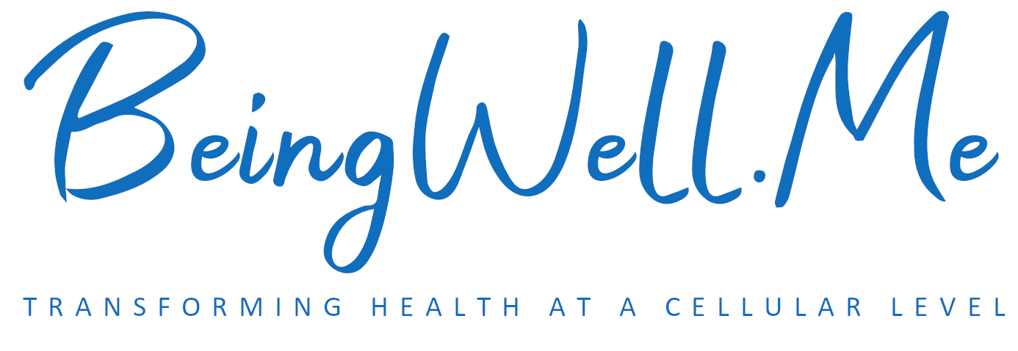The Ancient Origins of Mitochondria: Visitors From Another World
By understanding and honoring your mitochondria's ancient origins, you tap into cellular wisdom billions of years in the making, potentially unlocking pathways to enhanced vitality, longevity, and optimal wellness. Remember: when you care for your mitochondria, you're not just supporting your energy production—you're honoring the ancient partnership that makes all complex life possible. BeingWell.Me is dedicated to uncovering the ancient wisdom embedded in our biology and translating it into practical wellness strategies for modern living.
Russ Maher
3/31/20254 min read
The Ancient Origins of Mitochondria: Visitors From Another World
BeingWell.Me Guide to Understanding Your Cellular Power Plants
Have you ever considered that the source of your energy—the very thing that allows you to read these words, think your thoughts, and power every heartbeat—comes from ancient organisms that joined forces with your cells billions of years ago? At BeingWell.Me, we believe that understanding these remarkable cellular power plants is key to unlocking your optimal health and vitality.
Our Cellular Ancestors: An Extraordinary Partnership
Approximately 2 billion years ago, something miraculous happened in Earth's primordial oceans. A primitive cell engulfed a free-living bacterial organism and, instead of digesting it, formed a partnership that would change life on our planet forever. This ancient merger—known scientifically as endosymbiosis—gave birth to what we now call mitochondria.
These tiny powerhouses retain evidence of their independent origins. While your regular DNA forms linear strands in the nucleus of your cells, mitochondrial DNA (mtDNA) remains circular, just like the bacterial DNA of its ancestors. This ancient DNA has stayed remarkably preserved throughout evolution, creating a biological connection between humans and virtually all complex life forms on Earth.
The timing of this cellular marriage coincided with the Great Oxygenation Event, when oxygen began accumulating in Earth's atmosphere. What was toxic to many life forms became an opportunity for our cellular ancestors, who developed the ability to use oxygen to generate unprecedented amounts of energy—a process that powers your body to this day.
Why Mitochondria Matter for Your Wellness Journey
The acquisition of mitochondria wasn't just another step in evolution—it was a quantum leap that made complex life possible. Without these energy-generating organelles, multicellular organisms with specialized tissues and organs could never have evolved. Your brain alone, which consumes roughly 20% of your body's energy while making up only 2% of your body weight, would be impossible without mitochondrial energy production.
Each of your cells contains hundreds to thousands of these microscopic power plants, with energy-hungry tissues hosting even more:
Heart muscle cells: up to 5,000 mitochondria per cell
Liver cells: typically 1,000-2,000 mitochondria each
Total body composition: mitochondria make up about 10% of your body weight
Collectively, your body houses hundreds of billions to trillions of mitochondria, all working tirelessly to keep you alive and thriving.
Your Mitochondrial Uniqueness
What makes mitochondria truly special is their semi-autonomous nature. While most of their original genes have integrated with our nuclear DNA over billions of years of co-evolution, they've maintained 37 critical genes in their own separate genome. This genetic independence makes them the only major organelles in your cells that maintain their own DNA.
This autonomy allows mitochondria to:
Replicate independently from cell division
Respond to environmental signals in unique ways
Follow different inheritance patterns from your nuclear DNA
Speaking of inheritance, here's something fascinating: you inherited ALL your mitochondria exclusively from your mother.
The Maternal Mitochondrial Legacy
The maternal inheritance of mitochondria has profound implications for your health and connects you to an unbroken lineage stretching back to the dawn of complex life:
The Mechanics of Maternal Inheritance
During conception, while a sperm cell contributes nuclear DNA, its mitochondria are either actively destroyed or simply outnumbered by the egg's vast mitochondrial population (50-75 mitochondria in sperm versus 100,000-600,000 in the egg). Nature ensures this through several sophisticated mechanisms:
Protein Tagging: Sperm mitochondria are marked with ubiquitin, essentially flagging them for destruction after fertilization
Cellular Recycling: The embryo's systems specifically target and eliminate paternal mitochondria
Energy Differences: Sperm mitochondria often have lower energy potential, making them vulnerable to elimination
Why This Matters for Your Health
This maternal inheritance pattern isn't just a biological curiosity—it has real implications for your wellness:
Genetic Health Patterns: Conditions arising from mitochondrial DNA mutations follow strictly maternal inheritance
Aging Tendencies: Some aspects of how we age may follow maternal patterns, potentially explaining why longevity sometimes tracks more strongly through maternal lineages
Metabolic Predispositions: Your basic metabolic tendencies and how you process nutrients may be influenced by maternally-inherited mitochondrial efficiency
This exclusive maternal inheritance also allowed scientists to trace all living humans back to a theoretical woman nicknamed "Mitochondrial Eve," who lived in Africa approximately 150,000-200,000 years ago. While she wasn't the only woman alive then, all other maternal lineages have gradually disappeared over generations.
Activating Your Ancient Cellular Wisdom
At BeingWELL.Me, we recognize that understanding the ancient and semi-autonomous nature of mitochondria explains why they respond so dramatically to specific wellness practices. The following approaches speak directly to these primordial cellular citizens in a language they've understood for billions of years:
Light Exposure: Strategic sunlight exposure activates ancient mitochondrial pathways
Temperature Variation: Cold thermogenesis and heat exposure trigger mitochondrial adaptation mechanisms
Nutritional Timing: Intermittent fasting and time-restricted eating tap into mitochondrial signaling systems
Movement Patterns: Certain exercise protocols optimize mitochondrial function and biogenesis
Recent research has even revealed the counterintuitive benefits of making mitochondria slightly "leaky" through controlled uncoupling. This challenges conventional wisdom that maximum efficiency is always best for health, showing instead that strategic uncoupling can activate beneficial cellular pathways, including stem cell activation and improved metabolic resilience.
Your Mitochondrial Optimization Plan
Ready to honor your ancient cellular inhabitants? BeingWell.Me recommends these daily practices to communicate with your mitochondria in their evolutionary language:
Morning sunlight exposure: 10-20 minutes within an hour of waking
Temperature contrasts: Brief cold exposure (cold showers, plunges) followed by warmth
Eating windows: Contain food consumption within 8-10 hours daily
Movement variety: Combine high-intensity bursts with low-intensity movement throughout the day
Plant compounds: Incorporate colorful polyphenol-rich foods that interact with mitochondria
By understanding and honoring your mitochondria's ancient origins, you tap into cellular wisdom billions of years in the making, potentially unlocking pathways to enhanced vitality, longevity, and optimal wellness.
Remember: when you care for your mitochondria, you're not just supporting your energy production—you're honoring the ancient partnership that makes all complex life possible.
BeingWell.Me is dedicated to uncovering the ancient wisdom embedded in our biology and translating it into practical wellness strategies for modern living.
















